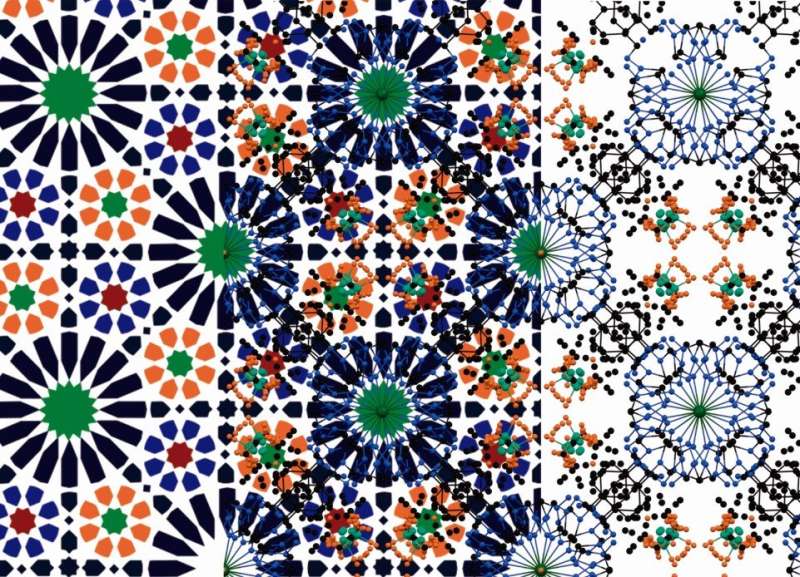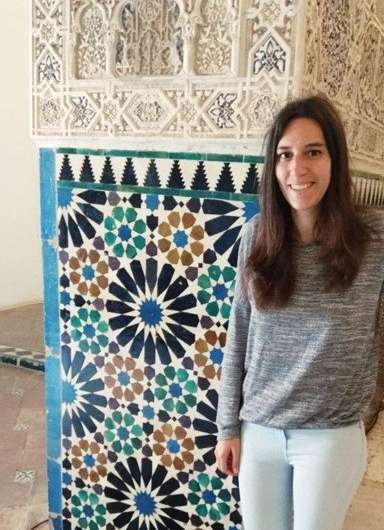Credit: Imdea
Scientists from Spain and the U.S. have synthesized an unprecedented metal-organic-framework (MOF) that contains a perfectly linear bridging chain showing a beautiful resemblance with an XIV century Islamic mosaic of the Alhambra Palace in Granada (Spain).
MOFs are a hot topic in science research. As an illustrative example of their relevance, in 2017, it was estimated that 6000 novel MOFs are published each year. MOFs show a wide variety of potential applications in many important areas, such as storage of fuels (hydrogen and methane), capture of carbon dioxide, catalysis, luminescence, electrical conductivity and biotechnology.
All these properties arise from their intrinsic porosity and versatility. Indeed, MOFs are molecular materials formed by metal ions bridged by organic ligands, thus creating size-tuneable structural voids to absorb guest molecules and act as highly specific molecular vessels with different absorption capabilities.
Nevertheless, obtaining novel compositions or novel synthetic methods with the aim of obtaining targeted specific properties for their ultimate technological application, is still a real challenge for scientists.
Dr. José Sanchez Costa from IMDEA Nanociencia in Madrid and his colleagues started by synthesizing novel extended triazole-based ligands with the aim of obtaining large cavities coupled to metal centres that may be susceptible to achieve one of the most fascinating molecular switchable process called spin crossover. For that they constructed the MOF using these ligands along with iron and fluoride ions and found that it contained iron–fluorine bridging chains with remarkable linearity. The research has been published in Chemical Communications and highlighted in Chemistry World.
Credit: Imdea
MOFS and mosaics
The researchers also highlighted another interesting feature of the MOF's structure – it resembles a 14th-century Islamic mosaic located at the Alhambra Palace in Granada, Spain.
A mosaic is a design assembled from small pieces of ceramic, glass, stones or other materials. These can either be organized in exact geometric shapes or created from more haphazard and broken pieces. There has been an enormous amount of research on mosaic tiling worldwide, and they are a source of many teaching subjects in mathematics and art.
The Dutch artist M.C. Escher was inspired by these pieces after visiting the Alhambra Palace in Granada (Spain) and that resulted in his 1958 publication "Regular Division of the Plane," in which he described the systematic build-up of mathematical bridges. Today, the Escher techniques are used to create patterns with tiles that, by applying geometric movements, produce a variety of mosaics.
The authors explain that the genuine tessellation of this novel mosaic-like MOF "mainly arises from an unusual rotation of the central metal equatorial coordination plane along the one-dimensional direction." With this study, Sanchez Costa et al. have demonstrated that these modern materials can have beautiful distributions, just as the medieval palace mosaics.
More information: Estefania Fernandez-Bartolome et al. A robust and unique iron(ii) mosaic-like MOF, Chemical Communications (2018). DOI: 10.1039/c8cc01561a
Journal information: Chemical Communications
Provided by Imdea
























